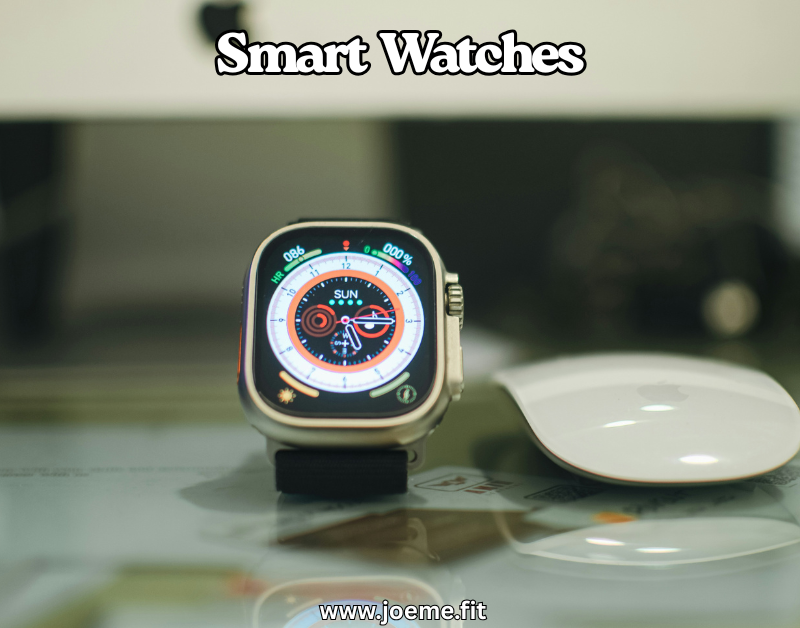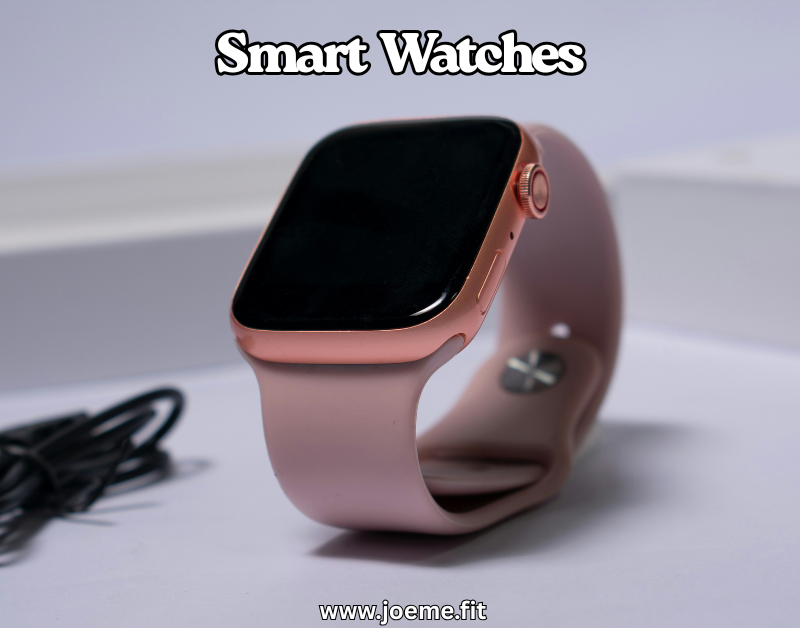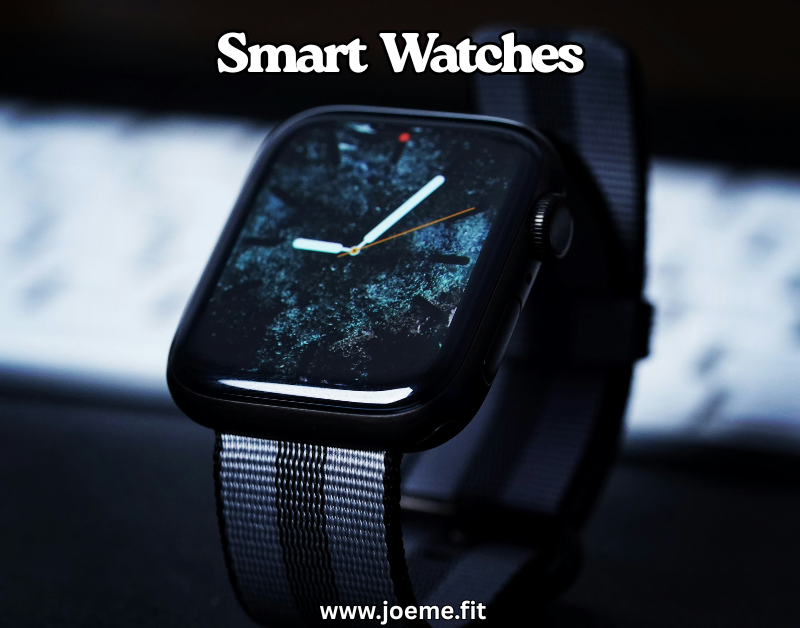In today’s fast-paced world, staying on top of health and fitness can feel like a full-time job. People want to monitor their activity levels, track workouts, understand sleep patterns, and keep an eye on overall wellness—all without disrupting their daily routine.
That’s where smart watches step in. More than just timekeepers, these wearable devices act as personal health assistants, giving users a cinematic view of their body’s performance throughout the day. From step counts to heart rate monitoring, calorie tracking, and sleep analysis, they provide actionable insights that help people make informed decisions about fitness and lifestyle.
Beyond fitness, modern devices can alert users to unusual activity, track progress over time, and integrate seamlessly with apps and platforms, creating a complete ecosystem for wellness. The convenience, real-time monitoring, and depth of data offered by these devices have made them an essential tool for anyone looking to stay healthy, active, and informed.
Smart Watches Explained How They Track Health and Fitness Data
In this guide, we will explain how smart watches track health and fitness data, how they work, and how to use them effectively to optimize your wellness journey.

Smart-watches have become a central tool for monitoring health and fitness in everyday life. These wearable devices go beyond showing time—they provide detailed insights into physical activity, heart health, sleep quality, calorie burn, and much more. This guide explains the core technology behind these devices and how they track health metrics in a clear, cinematic, and user-friendly way.
Understanding the Core Technology
Smart watches rely on a combination of advanced sensors and software algorithms to capture and analyze health data. The key components include:
- Accelerometers: Detect movement and count steps.
- Gyroscopes: Track orientation and rotation for accurate activity measurement.
- Optical Heart Rate Sensors: Monitor blood flow and heart activity.
- GPS Modules: Map outdoor activities and calculate distance and pace.
- Barometers: Measure altitude changes for climbing or running.
These sensors work in harmony to deliver cinematic, real-time insights. By processing raw data through intelligent algorithms, smart-watches can differentiate between walking, running, cycling, and other forms of exercise, ensuring precise tracking. Visit here!
How Step Tracking Works
Step tracking is one of the fundamental features of smart-watches. The accelerometer detects motion patterns that correspond to walking or running. The device interprets arm swings and body movement to calculate steps.
Step Tracking Details:
- Motion sensors detect changes in speed and direction.
- Arm movement is analyzed to distinguish walking from other motions.
- Algorithms filter out false movements from hand gestures.
Example Table: Step Tracking Metrics
| Metric | Purpose | How It’s Measured |
|---|---|---|
| Steps | Daily activity | Accelerometer + Gyroscope |
| Distance | Total distance walked/run | GPS + Step Length Calculation |
| Pace | Speed of walking or running | Time + Distance |
| Floors Climbed | Altitude gain | Barometer |
This data allows users to set activity goals and monitor progress in a cinematic, easy-to-visualize dashboard.
Heart Rate Monitoring
Continuous heart rate tracking provides critical insights into health and fitness levels. Smart watches use optical sensors that emit light into the skin, measuring how blood absorbs and reflects it. The device calculates beats per minute (BPM) to monitor heart activity.
Heart Rate Monitoring Features:
- Real-time BPM tracking during rest and activity.
- Heart rate zones for aerobic and anaerobic training.
- Alerts for unusually high or low heart rates.
- Integration with fitness apps to analyze trends.
Accurate heart rate monitoring helps users optimize workouts, track recovery, and maintain cardiovascular health.
Sleep Tracking and Recovery Insights

Sleep tracking is an essential part of health monitoring. Smart-watches detect movements and changes in heart rate to determine sleep stages: light, deep, and REM sleep.
Sleep Tracking Breakdown:
- Sleep Duration: Total hours slept.
- Sleep Stages: Light, deep, REM cycles.
- Restlessness: Detect interruptions during sleep.
- Recovery Score: Overall sleep quality assessment.
By understanding sleep patterns, users can improve rest, recover faster from workouts, and maintain energy levels throughout the day.
Calorie Tracking and Activity Analysis
Monitoring calories burned helps manage weight and optimize workouts. Smart-watches calculate energy expenditure by combining movement data with physiological measurements such as heart rate.
Calorie Tracking Details:
- Basal Metabolic Rate (BMR): Calories burned at rest.
- Active Calories: Calories burned during exercise.
- Total Daily Calories: Sum of BMR and active calories.
Example Table: Activity vs Calories Burned
| Activity | Duration | Estimated Calories Burned |
|---|---|---|
| Walking 30 min | 30 min | 120 |
| Running 30 min | 30 min | 300 |
| Cycling 45 min | 45 min | 400 |
| Yoga 60 min | 60 min | 180 |
This cinematic display of data allows users to make informed lifestyle choices.
Fitness Metrics for Every Activity
Modern smart watches track a variety of activities, providing detailed metrics for each.
Activity Tracking Overview:
- Running: Pace, cadence, distance, heart rate.
- Cycling: Speed, route mapping, power output.
- Swimming: Stroke count, lap times, efficiency.
- Strength Training: Repetitions, sets, and rest periods.
Visual dashboards provide a cinematic view of progress over time, motivating users to maintain or improve performance.
Health Alerts and Safety Features
Advanced devices offer health alerts to keep users safe. Smart-watches can detect irregular heartbeats, high stress levels, and sudden inactivity.
Safety Features Include:
- Heart rate anomaly alerts.
- Fall detection with emergency contacts.
- Activity reminders for prolonged sedentary periods.
- Notifications for abnormal blood oxygen or stress levels.
These features act as a personal health assistant, ensuring timely awareness and interventions.
Data Accuracy and Limitations
While smart-watches offer valuable insights, there are some limitations:
- Placement on the wrist can affect sensor readings.
- Extreme motion or unusual activity may reduce accuracy.
- Optical heart rate sensors can be less accurate during high-intensity workouts.
- Calorie calculations are estimations rather than exact numbers.
Despite these minor limitations, continuous monitoring provides actionable, cinematic insights into health trends.
Integration with Apps and Platforms
Data from smart watches can be synced with apps and platforms for deeper analysis.
Integration Benefits:
- Historical trends and visual dashboards.
- Personalized workout recommendations.
- Exporting data to healthcare professionals.
- Social sharing for motivation and community support.
Integration expands the value of wearable devices, creating a connected ecosystem for health and fitness.
Choosing the Right Device
Selecting a device depends on lifestyle, budget, and goals.
Key Factors to Consider:
- Battery Life: Longer life ensures uninterrupted tracking.
- Water Resistance: Essential for swimmers or outdoor activities.
- Sensor Variety: More sensors = more detailed data.
- App Ecosystem: Compatibility with favorite apps and platforms.
- Design and Comfort: Wearable for long durations without discomfort.
Choosing the right device ensures accurate, reliable, and motivating health monitoring.
The Future of Wearable Health Tracking
The future promises more advanced, unobtrusive monitoring. Emerging sensors aim to track:
- Blood oxygen levels
- Hydration
- Stress hormone indicators
- Predictive health insights
Artificial intelligence will analyze real-time data to provide proactive recommendations. Users will have a cinematic health dashboard predicting fatigue, recovery needs, and optimal workout times, transforming smart-watches into personal health companions.
FAQ Section
Q1: Are smart watches accurate for tracking heart rate?
A1: Yes, they provide reliable readings at rest and moderate activity, though very intense workouts may slightly affect accuracy.
Q2: Can sleep tracking help improve recovery?
A2: Absolutely. Understanding sleep stages helps users optimize rest and overall performance.
Q3: Do smart watches track calories accurately?
A3: Calories are estimated using motion and heart rate data. They are approximate but useful for monitoring trends.
Q4: Can I use a smart watch without a smartphone?
A4: Many devices offer offline tracking, but advanced features like GPS syncing or app integration may require a smartphone.
Q5: Are smart-watches suitable for children or seniors?
A5: Yes. Some devices are designed specifically for children or seniors, with safety alerts and simplified interfaces.s platforms.

Conclusion
Wearable devices have transformed the way we monitor health and fitness, turning data that was once hard to track into a clear, cinematic visualization on your wrist. Smart watches provide real-time insights into daily activity, heart rate, sleep patterns, and calories burned, helping users make informed decisions about fitness and wellness. By continuously monitoring metrics, they create trends that highlight progress, reveal areas for improvement, and motivate individuals to stay active and maintain healthy routines.
Beyond tracking, modern devices offer safety alerts, reminders, and seamless integration with apps and platforms, creating a complete ecosystem for managing personal health. While no device can replace professional medical advice, the accuracy and convenience of these wearables make them indispensable tools for both fitness enthusiasts and those looking to improve daily wellness. With emerging features like predictive analytics, stress monitoring, and advanced biometric tracking, wearable technology is evolving into a proactive companion for better health management. By understanding how these devices work and utilizing their features effectively, anyone can gain a deeper awareness of their body, optimize performance, and achieve a healthier lifestyle.